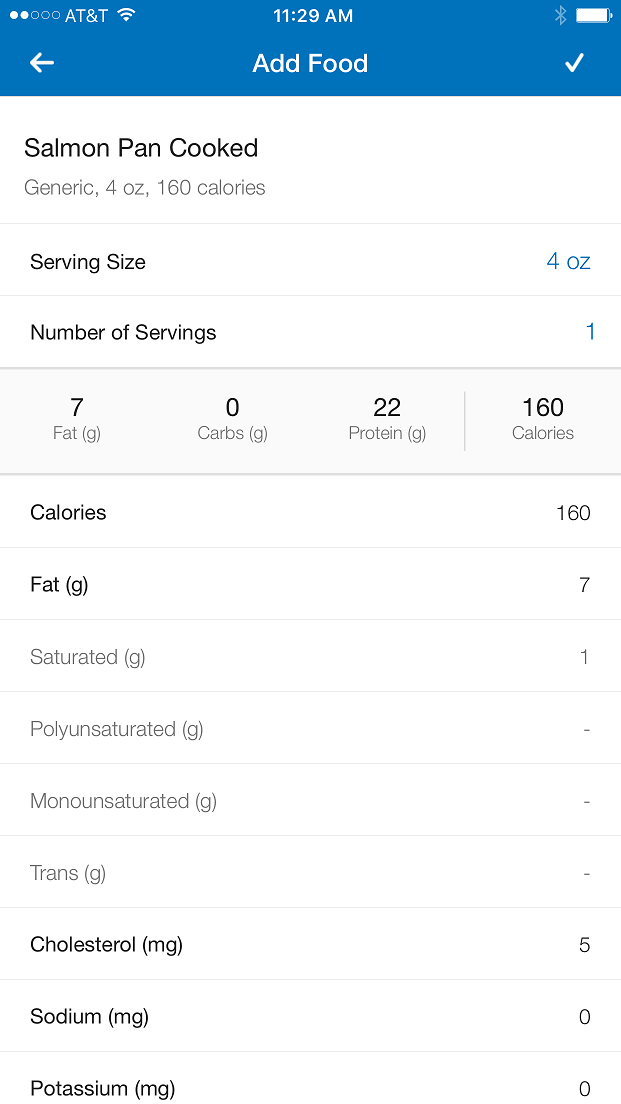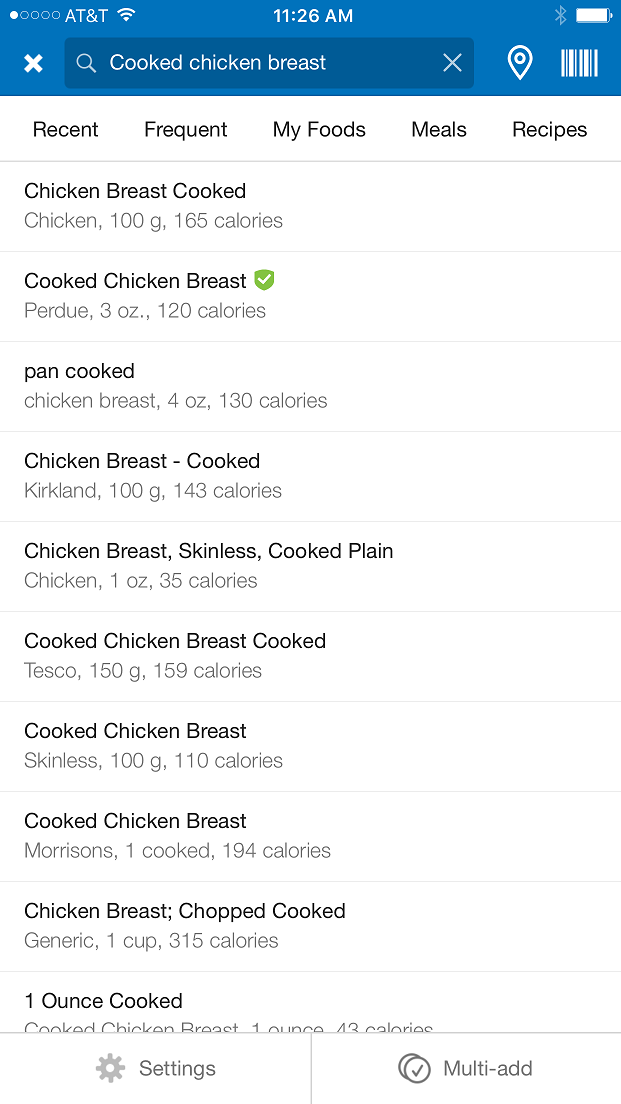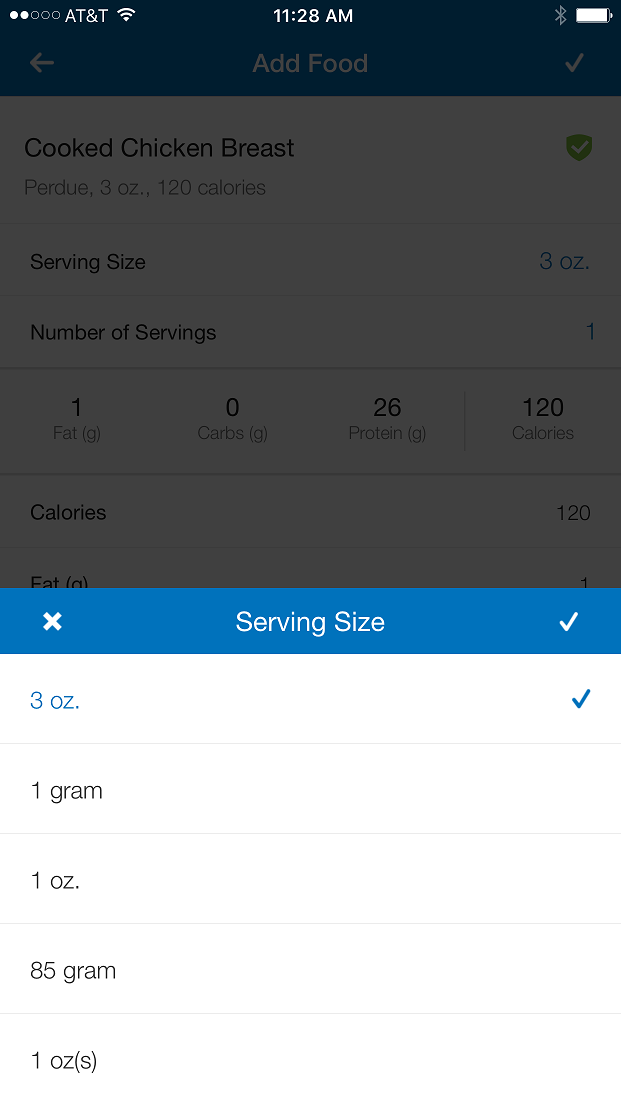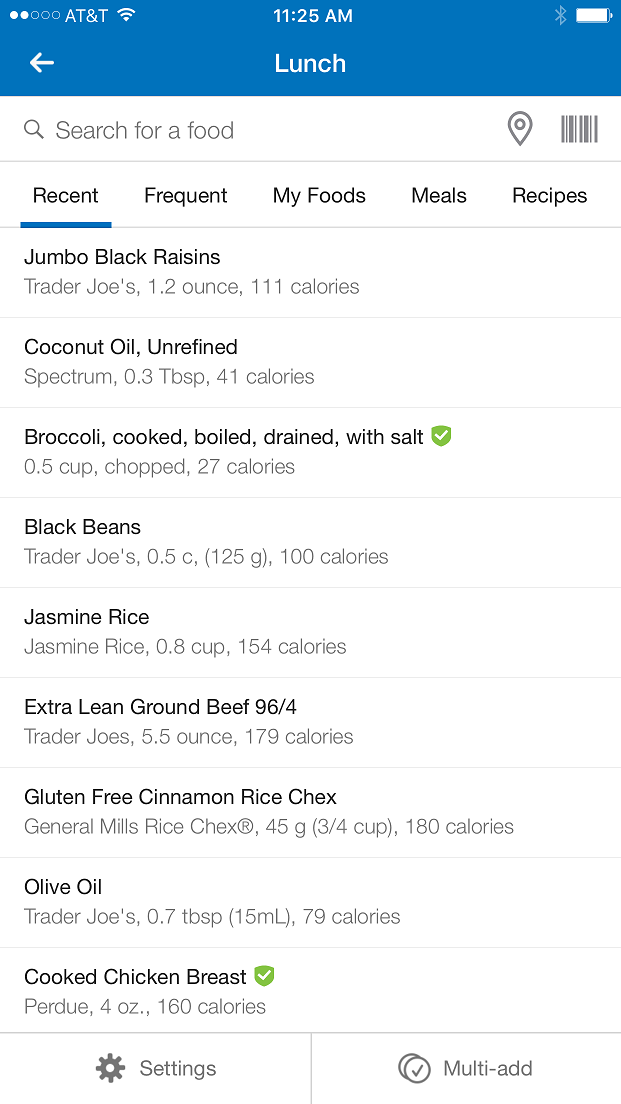Two Week Tracking Challenge
HERE’S A CHALLENGE FOR YOU – TELL ME EVERYTHING YOU ATE YESTERDAY.
Was that just meals or did you include snacks too? Was that measured or eyeballed? Are you purposefully not telling me about the Hershey Kisses? How much half and half in your coffee….oh just a splash?
For most of us, being able to accurately describe what and how much we ate to someone else, even as short as 12 hours ago, is really hard. Part of this is because we really don’t have the education and assessment skills to actually be confident when something is “4 ounces”. So what we normally end up with is:
1. Under reporting calorie intake and portion sizes
2. Over reporting calorie intake and portion sizes
While it seems like over reporting might work in your favor, it usually doesn’t. What I notice more often than not is that those who over report, do it more with the “good stuff” like protein and veggies. And those who under report tend to do it with all the carbohydrates, fats, sweets and salty things.
Rarely does someone say “Oh, I eat about ½ cup veggies per meal” and they’re actually eating 1.5 cups. Lets face it, I’ve never done that and most likely you haven’t either. Human nature has a way of protecting what it doesn’t want to give up while simultaneously inflating a small positive action.
Fixing Your Internal Measurement
One of the best ways to educate someone on portion size is to have them weigh and measure for two weeks. And I mean weigh and/or measure everything. The point is that you don’t need me trying to reiterate what a half cup is, you need to be faced with that portion size and own up to it every time you measure your food. You also just need to see what 6 ounces of chicken looks like so you can stop claiming your 2 ounce piece was “hyoooooooge”!
Here’s my top three comments when clients start this challenge:
1. I’m not eating enough protein
2. I’m not eating enough vegetables
3. I’m eating way too much peanut butter
You think I’m joking?
The best and most permanent changes come from self-realization.
The Art of Nutritional Self-Realization
What happens with the above is that a client has an “ah-ha” moment (no, not the band) when they’re accurately measuring portions.
At first, they’ll probably think the battery is busted on the food scale. Then, these thoughts come in - maybe that was just a weird piece of chicken that just happened to weigh less despite being large. Ok, OK, that piece was small but usually I eat much more. OK, I’m realizing I never eat 6 oz of chicken. I’m realizing 6 oz of chicken is REALLY filling. When I eat this much protein I am more full. I’m full but let me grab some M&M’s, just a couple. Oops, a couple was actually half a bag. Do I always eat half a bag? Where’d the other half go? Darn it, I ate it while I was thinking about all of this.
Through this process they’re faced with their individual choices every time they weigh, measure and log. Not only does this reinforce what you are doing but it also teaches some side benefits like:
1. A lot of ads claim foods are high in protein when they’re really just carb-dense snacks
2. The more processed something is, the easier it is to over eat
3. Snacking on “this and that” really adds up
4. It’s very easy to overeat healthy fats
Armed with Knowledge
This person now has gone through a nutrition boot-camp. When you say protein, they “get” what a protein is – it’s not Ezekiel Bread, it’s meat, eggs and dairy. When you say one tablespoon of peanut butter, they’ll know it’s not whatever fits into the largest soup spoon they have.
The ground work has been laid and confidence is much higher. And there’s nothing more inspiring for a coach or client than when a client is confident. It means they’ll stick to their plan, be motivated and more importantly have the knowledge to make their own decisions.
Ready to educate yourself?
Getting Started
A quick caveat – I don’t recommend everyone weigh and measures permanently, nor is it necessary. If you find it works well for you and causes no anxiety, stress or confusion in your daily routine then go for it. If you find that is was helpful but not something you could maintain long-term, then just use it for these two weeks.
Step 1
Download a food tracking app such as My Fitness Pal or Calorie King. My Fitness Pal is very easy to use and I recommend it highly. It is also free.
Step 2
Buy a digital scale and make sure you have good cup and spoon measures like ¼, ½ and 1 cup and teaspoon and tablespoon measurers.
Step 3
Eat normally
Step 4
Determine what needs to be weighed and what can be measured by volume. Generally, dry ingredients like oats, cooked ingredients like rice and quinoa and liquid measures like almond milk and juice benefit from being measured by volume as their size will always be relatively constant.
Foods like cooked proteins, cooked veggies, almonds, mashed potatoes and fruit benefit from being weighed as the volume changes from item to item and cooked vs raw.
Some items, like a slice of pre-sliced cheese or single serving yogurt you can easily find on My Fitness Pal as a singular item that doesn’t need to be weighed because the manufacturer already determined the macronutrients and calories for that item.
Calorie Trackers Need to Be Used Correctly
Here’s where a lot of people find trouble with their tracking. For instance, they’ll either use items they find on My Fitness Pal that are wildly inaccurate or not appropriate for their selection. Here’s some examples:
1. Incorrect Information – Sometimes, other people who have no clue log foods in My Fitness Pal. So you get things like “4 oz salmon” that has 7g of fat. Common sense tells us that isn’t right because salmon is a fatty fish and there’s no way it only has 3g of fat(more like 25g). But if you don’t have a reference point, you won’t be able to spot wonky entries like this:

Once you get used to it, you'll be able to spot bogus entries like this. 7g of fat for 4oz salmon is WAY low.
It’s best to use the items that have a Green Check next to them as they have been verified. Another safe measure is to check multiple entries before choosing one. For instance you look for steamed green beans and come across one that seems right but it says it has 4g of fat. You check a couple more and they all say 0g of fat. It’s safe to say then, that the first entry was either wrong or the person who made it added an oil without specifying in the description. See how on this list of foods when I search for "cooked chicken breast", there's only one verified option?

2. Inappropriate Selections- This one is huge and easily overlooked. Lets say you have ½ cup of cooked rice you are eating. Some descriptions will be for cooked and uncooked rice. If you select ½ cup of uncooked rice then you’ve essentially doubled the carbohydrates for that item leading to artificially high totals in your daily tracking.
Another example is raw vs cooked proteins. Often clients will weigh their protein cooked but select a raw protein from the tracker. This is a big mistake because protein, like veggies and carbs change their weight once cooked. So 6oz of raw chicken has 36g of protein. 6oz of cooked chicken has 54g of protein!
3. Make sure you weigh how you eat! Select “ounces” for most foods since that’s how you’ll weigh. Choosing an item measured in grams and trying to mentally convert is too much work. Sometimes items allow you to change their measurement so if you find one that appears accurate but is only in grams, you may be able to select it to be in ounces, like below:

4. Lastly, once you find reliable and accurate sources, keep using them. My Fitness Pal saves your most commonly used entries so you won’t often need to venture out for new foods. Once you start logging, your food is saved in a list and when you go to enter a food, you can just select it from your “commonly entered foods” list. Makes it WAY easier once you get going.
For instance, my commonly used foods list looks like this:

Log for Two Weeks
For an entire two weeks, log everything you eat. Every meal, snack, bite, handful of M&M’s, hunk of bread and basically anything that goes in your mouth. This is where the true realization comes from. Those snacks and bites start to add up and you see that they actually do have an effect on your daily total and certainly add up! Listen, one bite of pizza every hour still leads to a couple of slices eaten at the end of the day. Sorry, that’s just how it is. This is owning up to that.
It’s important to be consistent and honest. Eat how you normally do because it will give the best assessment of what needs to be fixed. My Fitness Pal will give you recommendations for calories and macronutrients – just ignore them. Use the tracker only to track and don’t worry about the feedback it gives you because that would defeat the purpose.
As the day goes by, you can see how your calories and macronutrients add up. At the end of each day you can check everything out and see the totals. At the end of the two weeks we would look at the totals and check out the trends and see what the commonalities are. If you’re chronically under on protein or fiber, we’d address that. Too much fat or sugar, we can address that too. Two weeks is long enough to see how, even with daily fluctuations, you eat as a whole.
Here’s a summary of one of my days. I pay attention to getting enough protein and then where my calories fall. I also shoot for minimum of 30g fiber per day, today was excellent with 53g fiber:
At the end of the two weeks, I’d average out what my calories, protein, carbs, fat and fiber are to get a good summary of a typical day for me. We’ll do that and then use it to determine where you need help.
Let’s get logging!
After Two Weeks?
We’ll cover that in the next post – for now, get logging and if you have any questions you can email me or better yet, post in our Food To Get You Fit Facebook group so the whole group can see your question and my answer. If you aren’t a part of that group, let me know and I’ll add you!

